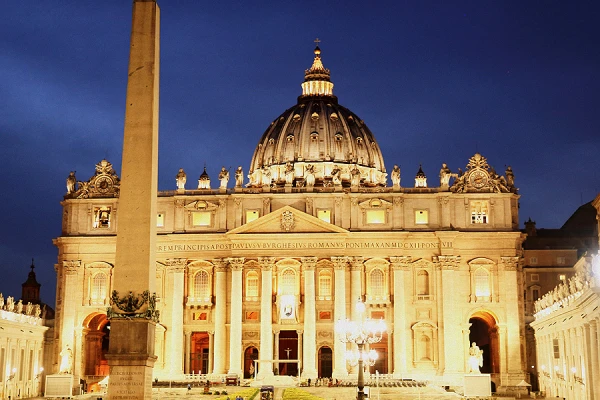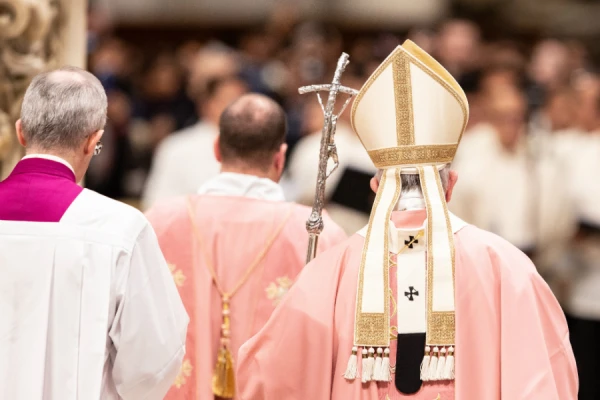
Vatican City, Jan 21, 2021 / 04:49 pm (CNA).- Two Italian contemporaries, a young priest who resisted the Nazis and was shot dead, and a seminarian who died at age 15 from tuberculosis, are both closer to being declared saints.
Pope Francis advanced the beatification causes of Fr. Giovanni Fornasini and Pasquale Canzii Jan. 21, together with six other men and women.
Pope Francis declared Giovanni Fornasini, who was assassinated by a Nazi officer at age 29, a martyr killed in hatred of the faith.
Fornasini was born near Bologna, Italy, in 1915, and had one older brother. He is reported to have been a poor student, and after leaving school to have worked for a time as a lift boy at the Grand Hotel, Bologna.
He eventually entered the seminary, and was ordained a priest in 1942, at the age of 27. In his homily at his first Mass, Fornasini said, “The Lord has chosen me, rascal among the rascals.”
Despite beginning his priestly ministry among the difficulties of the Second World War, Fornasini gained a reputation as a go-getter.
He opened a school for boys at his parish outside the city of Bologna in the town of Sperticano, and a fellow seminary classmate, Fr. Lino Cattoi, described the young priest as seeming “always to be running. He was always around trying to free people from their difficulties, and to solve their problems. He had no fear. He was a man of great faith, and was never shaken.”
When the Italian dictator Mussolini was overthrown in July 1943, Fornasini ordered the church bells to be rung.
The Kingdom of Italy signed an armistice with the Allies in September 1943, but north Italy, including Bologna, was still under the control of Nazi Germany. Sources on Fornasini and his activities during this period are incomplete, but he is described as being “everywhere,” and is known to have at least on one occasion provided shelter in his rectory to survivors of one of three bombings of the city by the Allied powers.
Fr. Angelo Serra, another parish priest in Bologna, recalled that “on the sad day of Nov. 27, 1943, when 46 of my parishioners were killed in Lama di Reno by Allied bombs, I remember Fr. Giovanni working as hard in the rubble with his pickaxe as if he had been trying to rescue his own mother.”
Some sources claim the young priest was working with Italian partisans fighting the Nazis, though accounts differ about the degree of his connection to the brigade.
Some sources also report that he intervened on several occasions to save civilians, especially women, from mistreatment or being taken by German soldiers.
Sources also provide different accounts about the last few months of Fornasini’s life and the circumstances of his death. Fr. Amadeo Girotti, a close friend of Fornasini, wrote that the young priest had been given permission to bury the dead at San Martino del Sole, Marzabotto.
Between Sept. 29 and Oct. 5, 1944, Nazi troops had carried out a mass killing of at least 770 Italian civilians in the village.
According to Girotti, after giving Fornasini permission to bury the dead, the officer killed the priest at the same site on Oct. 13, 1944. His body, shot in the chest, was identified the next day.
In 1950, the president of Italy posthumously conferred upon Fornasini the country’s Gold Medal of Military Valour. His cause for beatification was opened in 1998.
Just one year before Fornasini, another boy was born several regions to the south. Pasquale Canzii was the first son born to devout parents who had struggled to have children for many years. He was known by the affectionate name of “Pasqualino,” and even from a young age he had a calm temperament and an inclination toward the things of God.
His parents taught him prayers and to think of God as his Father. And when his mother would bring him to church with her, he would listen and take in everything that was happening.
Twice before his sixth birthday, Canzii had accidents with fire which burned his face, and both times, his eyes and sight were miraculously unharmed. Despite sustaining severe injuries, in both cases, his burns eventually completely healed.
Canzii’s parents had a second son, and because he was struggling to financially provide for the family, the boy’s father decided to immigrate to the United States for work. Canzii would exchange letters with his father, though they never met again.
Canzii was a model student and started to serve at the altar at the local parish. He always participated in the religious life of the parish, from Mass to novenas, to the rosary, to the Via Crucis.
Convinced he had a vocation to the priesthood, Canzii entered the diocesan seminary at the age of 12. Once questioned contemptuously about why he was studying for the priesthood, the boy answered, “because, when I am ordained a priest, I will be able to save many souls and I will have saved my own. The Lord wills, and I obey. I bless the Lord a thousand times who called me to know and love him.”
In seminary, as in his early childhood, those around Canzii noticed his uncommon level of holiness and humility. He would often write: “Jesus, I want to become a saint, soon and great.”
One fellow student described him as “always easy to laugh, simple, good, like a child.” The same student said the young seminarian “burned in his heart with lively love for Jesus and also had a tender devotion to Our Lady.”
In his last letter to his father, on Dec. 26, 1929, Canzii wrote, “yes, you do well to submit to the Holy Will of God, who always arranges things for our good. It doesn’t matter if we have to suffer in this life, because if we have offered our pains to God in consideration of our and others sins, we will acquire merit for that Heavenly Fatherland where we all yearn.”
Despite obstacles to his vocation, including his weak health and his father’s desire that he become a lawyer or physician, Canzii did not waver in following what he knew to be God’s will for his life.
At the start of 1930, the young seminarian became ill with tuberculosis, and on Jan. 24 he died at the age of 15.
His cause for beatification was opened in 1999, and on Jan. 21, Pope Francis declared the boy “venerable,” having lived a life of “heroic virtue.”
Canzii’s younger brother, Pietro, moved to the U.S. in 1941 and worked as a tailor. Before his death in 2013 at the age of 90, he spoke in 2012 to the Catholic Review, of the Archdiocese of Baltimore, about his extraordinary older brother.
“He was a good, good boy,” he said. “I know he was a saint. I know his day will come.”
Pietro Canzi, who was 12 when his brother died, said Pasqualino “always gave me good advice.”
If you value the news and views Catholic World Report provides, please consider donating to support our efforts. Your contribution will help us continue to make CWR available to all readers worldwide for free, without a subscription. Thank you for your generosity!
Click here for more information on donating to CWR. Click here to sign up for our newsletter.




Leave a Reply